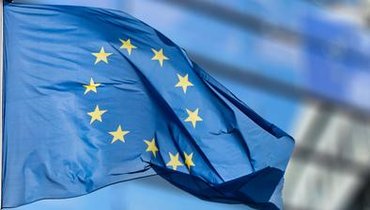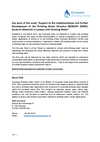The European study on materials in contact with drinking water recognises the issues of the low degree of harmonisation and insufficient mutual recognition in the EU Member States’ application of Article 10 of the Drinking Water Directive (98/83/EC) (DWD) which requires that that substances / materials in contact with drinking water do not remain in drinking water at concentrations harmful to human health.
First part of the Study on materials in contact with drinking water contracted by the Commission made available in early March
On March 2017 a consortium led by the Environment Agency Austria (UBA) published the study “Support to the Implementation and Further Development of the Drinking Water Directive 98/83/EC (DWD): Study on Materials in contact with Drinking Water” (hereafter, the Study).
The UBA carried out the study in cooperation with the WRc (UK), KWR (Netherlands), OIEau (France) Institute for Water of the Republic of Slovenia (IzVRS).
The main objective of this initiative is to assess the problem of materials and products coming in contact and affecting the quality of drinking water.
Review of Drinking Water Directive
This takes place in the context of the review that is being carried out by the Directorate General for the Environment of the European Commission on the impact of Article 10 of the DWD on the lack of harmonisation of requirements for materials and products used in drinking water applications.
The revision of the overall DWD is included in the 2017 Commission Work Programme.
Preparatory work is in progress. The need to assess and revise the DWD follows on from the first successful European Citizens’ Initiative (ECI) Right2Water.
A Commission proposal is expected for the end of 2017.
Task 1 of the Study: Legislation, standards, scope
The Study contracted by the Commission is divided in three tasks which are aimed at:
- Analysing the problem of materials and products affecting the quality of drinking water to provide an overview of the issues including an indication of its scale (Task 1);
- Developing a guidance for users of materials in contact with drinking water (Task 2), and
- Providing support to the drafting of an impact assessment (Task 3).
The consortium so far issued Task 1 and 2.
Task 1 aims at identifying the status of the market for products coming into contact with drinking water. It describes the current regulatory framework as well as RELEVANT economic aspects (e.g. number of companies operating on the market, compliance costs, etc.).
Among the regulatory constraints limiting the free movement of goods the Study focuses on the current unclear version of Art. 10 of the DWD, and the consequent possibility for Member States to implement different and divergent product/materials approval schemes. The study also describes the attempted creation of material and product standards (e.g. CEN) which never successfully managed to ensure the creation of a system of certifications validly recognized across the EU (read the full History).
The assessment of the current regulatory and trade barriers is carried out by reviewing information provided by national competent bodies, trade associations, and companies as well as the scrutiny of the requirements of selected national approval schemes. Of particular interest are some case studies provided by EDW member associations.
In its conclusions, the Study analyses possible regulatory solutions. Specifically, it describes four policy options on whether, how and at which level the material/product requirements and test procedures should be regulated:
- Option A – EU Regulation
- Option B - Development of performance standards under the Construction Product Regulation (CPR)
- Option C –Promotion of an EU-wide process to harmonise certification criteria
- Option D – Creation of (non-legislative) guidance for MSs on the testing of materials in contact with drinking water
Among other things, it points out how the achievement of a more centralized (on a regulatory level) product/material approval system would sort relevant economic benefits as it would limit the discrepancies currently characterizing the marketing conditions in the different Member States.
Together with Task 1 of the Study, the Consortium also issued Task 2 which provides for a simple, non-technical advice and information for the protection of the private part of the drinking water supply network, the domestic distribution system.
In the near future, it is expected the publication of Task 3, which following the findings of Task 1, and having in mind the four policy options described therein, it will explain why action may be needed at EU level and why it is necessary to work on this initiative.

